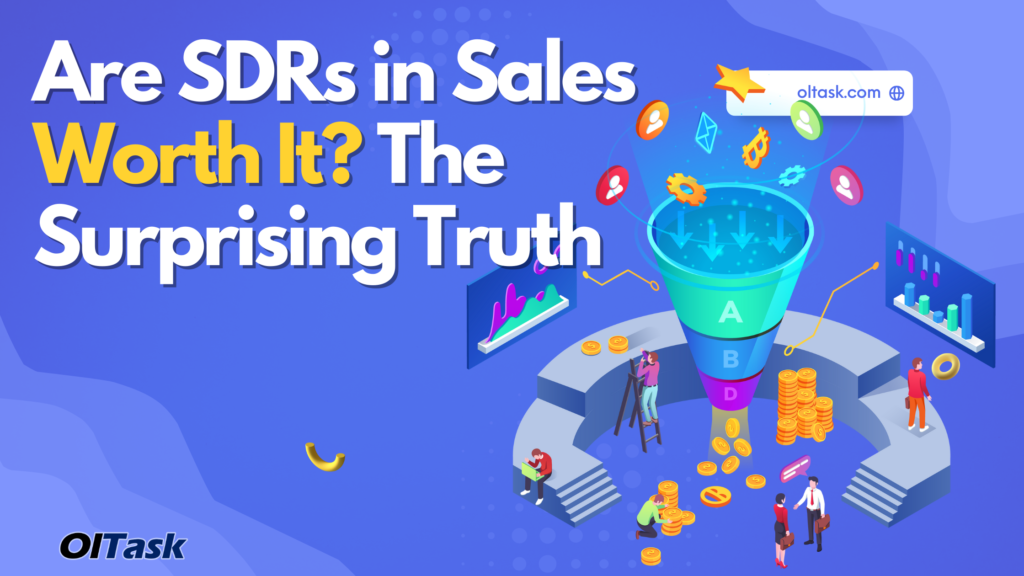In today's competitive business landscape, the role of SDR Inside Sales has become increasingly important. SDRs (Sales Development Representatives) are the backbone of many sales teams, responsible for generating leads and driving revenue growth. If you're considering a career in SDR Inside Sales or looking to enhance your skills in this field, this article is your go-to resource.
SDR Inside Sales professionals play a crucial role in connecting businesses with potential customers. By leveraging digital tools, communication skills, and strategic planning, they help organizations achieve their sales targets. Understanding the intricacies of this role can significantly boost your career prospects and contribute to your organization's success.
This comprehensive guide will delve into the responsibilities, skills, and strategies required to excel as an SDR Inside Sales professional. Whether you're a beginner or a seasoned professional, you'll find valuable insights to enhance your performance and achieve greater success in this dynamic field.
Read also:5movierulzin Your Ultimate Guide To Streaming And Downloading Movies
Table of Contents
- What is SDR Inside Sales?
- Key Responsibilities of an SDR
- Essential Skills for SDR Success
- Strategies for Success in SDR Inside Sales
- Common Challenges Faced by SDRs
- Tools for SDRs to Enhance Productivity
- Career Path for SDR Professionals
- Industry Trends in SDR Inside Sales
- Measuring SDR Performance
- Conclusion
What is SDR Inside Sales?
SDR Inside Sales refers to the process where Sales Development Representatives focus on generating leads and nurturing potential customers through outbound and inbound activities. Unlike field sales, SDRs operate remotely, using phone calls, emails, and digital platforms to connect with prospects.
As part of their role, SDRs identify qualified leads and pass them on to account executives for further nurturing and closing. This ensures a smooth transition between lead generation and deal closure, ultimately contributing to the company's revenue growth.
Why SDRs Are Crucial for Business Growth
SDRs act as the bridge between marketing and sales teams, ensuring alignment and synergy in lead generation efforts. By focusing on outbound prospecting and inbound lead qualification, they help streamline the sales process and improve overall efficiency.
Key Responsibilities of an SDR
An SDR Inside Sales professional is responsible for various tasks that contribute to the success of the sales pipeline. Here are some of their key responsibilities:
- Identifying and targeting potential customers through research and analysis.
- Engaging with prospects via phone calls, emails, and digital platforms.
- Qualifying leads based on predefined criteria and passing them to account executives.
- Building and maintaining relationships with existing customers and prospects.
Day-to-Day Activities
On a daily basis, SDRs engage in activities such as:
- Making outbound calls to potential customers.
- Sending personalized emails to nurture leads.
- Participating in team meetings to discuss progress and strategies.
- Updating customer relationship management (CRM) systems with relevant data.
Essential Skills for SDR Success
To excel in the role of SDR Inside Sales, professionals must possess a combination of hard and soft skills. Here are some essential skills that contribute to success:
Read also:5movierulz Download 2025 Your Ultimate Guide To Legal Streaming And Downloads
- Communication Skills: Effective verbal and written communication is critical for engaging with prospects and conveying value propositions.
- Research Abilities: SDRs must be adept at researching potential customers and understanding their needs.
- Time Management: Prioritizing tasks and managing time efficiently ensures productivity and better results.
- Persuasion and Negotiation: Convincing prospects to move forward in the sales funnel requires strong persuasion and negotiation skills.
Developing Technical Proficiency
In addition to soft skills, SDRs must also be proficient in using various tools and technologies. This includes:
- CRM systems like Salesforce or HubSpot.
- Prospecting tools such as LinkedIn Sales Navigator.
- Data analysis software to track performance metrics.
Strategies for Success in SDR Inside Sales
Implementing the right strategies can significantly enhance an SDR's performance. Here are some effective strategies to consider:
1. Personalization: Tailor your outreach efforts to resonate with individual prospects, increasing the likelihood of engagement.
2. Consistency: Maintain a consistent follow-up schedule to stay top-of-mind with potential customers.
3. Collaboration: Work closely with marketing and sales teams to align efforts and optimize results.
Best Practices for Lead Qualification
Lead qualification is a critical aspect of an SDR's role. Some best practices include:
- Using a standardized qualification framework, such as BANT (Budget, Authority, Need, Timeline).
- Asking open-ended questions to gather more information about prospects.
- Documenting key insights in the CRM for future reference.
Common Challenges Faced by SDRs
Despite the rewards, SDR Inside Sales professionals often encounter challenges in their daily tasks. Some common challenges include:
- Low Response Rates: Prospects may not respond to outreach efforts, making it difficult to generate leads.
- Time Management: Balancing multiple tasks and responsibilities can be overwhelming.
- Rejection: Handling rejection and maintaining motivation can be challenging.
Overcoming Obstacles
To overcome these challenges, SDRs can adopt strategies such as:
- Refining their messaging to better resonate with prospects.
- Using automation tools to streamline repetitive tasks.
- Seeking mentorship and support from experienced colleagues.
Tools for SDRs to Enhance Productivity
Various tools and technologies can help SDRs improve their productivity and performance. Some popular tools include:
- CRM Systems: Tools like Salesforce and HubSpot help manage customer interactions and data.
- Prospecting Platforms: LinkedIn Sales Navigator and ZoomInfo assist in identifying and connecting with potential customers.
- Email Automation: Platforms like Outreach and Yesware enable SDRs to send personalized emails at scale.
Maximizing Tool Usage
To maximize the effectiveness of these tools, SDRs should:
- Understand the features and functionalities of each tool.
- Integrate tools seamlessly into their workflow for optimal efficiency.
- Regularly update and maintain data within the systems.
Career Path for SDR Professionals
A career in SDR Inside Sales offers numerous growth opportunities. Many SDRs progress to roles such as Account Executive, Sales Manager, or even Sales Leadership positions. To advance in their careers, SDRs should:
- Continuously develop their skills and knowledge.
- Seek mentorship and guidance from experienced professionals.
- Set clear goals and work towards achieving them.
Transitioning to Higher Roles
Transitioning from an SDR to a more senior role requires:
- Gaining experience in managing and closing deals.
- Developing leadership and management skills.
- Building a strong network within the industry.
Industry Trends in SDR Inside Sales
The field of SDR Inside Sales is constantly evolving, with new trends shaping the industry. Some notable trends include:
- Artificial Intelligence: AI-powered tools are enhancing lead generation and qualification processes.
- Remote Work: The rise of remote work has transformed how SDRs operate and engage with prospects.
- Data-Driven Decisions: Leveraging data analytics to make informed decisions and optimize performance.
Adapting to Change
To stay ahead in the industry, SDRs should:
- Stay updated with the latest trends and technologies.
- Be open to adopting new tools and methodologies.
- Continuously improve their skills to meet evolving demands.
Measuring SDR Performance
Evaluating the performance of SDRs is essential for ensuring their effectiveness. Key performance indicators (KPIs) include:
- Lead Generation: The number of qualified leads generated by the SDR.
- Conversion Rates: The percentage of leads that convert into opportunities.
- Activity Metrics: The number of calls, emails, and meetings conducted by the SDR.
Improving Performance
To improve performance, SDRs can:
- Set clear and measurable goals aligned with KPIs.
- Regularly review and analyze performance data to identify areas for improvement.
- Seek feedback from peers and managers to enhance skills and strategies.
Conclusion
In conclusion, SDR Inside Sales is a vital role that plays a significant part in driving business growth. By understanding the responsibilities, skills, and strategies required for success, professionals can excel in this dynamic field. Embracing industry trends and continuously improving skills will ensure long-term success and career advancement.
We encourage readers to share their thoughts and experiences in the comments section below. Additionally, feel free to explore other articles on our site for more insights into sales and marketing strategies. Together, let's continue learning and growing in the world of SDR Inside Sales!


